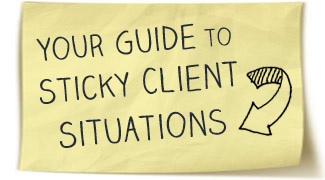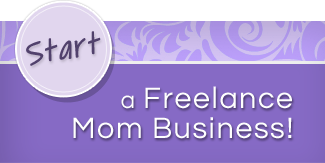
No matter what type of business you’re in, free consultation calls are bound to come up–even if you don’t think of them like that!
If you’re a writer, graphic designer, or any sort of strategist, the call you have when you’re talking to your potential client about what they’re looking for and what you can do for them–giving away valuable ideas for their business in the process–is one of the less obvious ways. But many types of coaches also do these calls to make sure that they are a good fit for the client and the client is a good fit for them.
However, while these calls may be the single most important thing you do in your business, short of bringing in and qualifying leads for these calls in the first place, they are a key place where a lot of us lose business.
Do you find yourself stumped after you feel like you’ve really connected on a call and then the deal doesn’t close?
Even if the call goes great, if you undersell, the prospect has no sense of urgency. But if you oversell rather than spending the bulk of the call “consulting,” prospects don’t clearly see the value of your services enough to pull the trigger.
Follow this step-by-step guide to setting up, doing, and following up on your intro calls and you’ll see the amount of business you book shoot up dramatically.
Pre Call
Are you taking the time to research your prospect before your intro call?
I hope most of you are answering yes to this. But here’s a harder one.
Are you collecting information from the prospect before the call to make sure you spend the call delivering value, not just gathering information?
Whether you use an actual form or just a simple set of questions you cut and paste by email, getting a sense of your prospect’s needs allows you to save time on your call you might otherwise spend pitching them the wrong service or package.
Make sure to get this information back several days or a week before your call if possible so you can let your subconscious simmer over it and find the best angles of commonality and approach.
Closer to your call, couple the information you have on what your prospect needs with another look at their website or business to put together a specific agenda of points and strategies to discuss in the call.
During the Call
Though many of us think of these calls as freebies, you’ll be much more successful if you think of them as content marketing.
Even if you’re not familiar with the strategy, you are no doubt exposed to content marketing all the time. Blogs, podcasts, YouTube channels, and even print books are all content marketing, because what unifies them is giving valuable, useful content to your target audience to drive prospects to action.
What content marketing is not, however, is straight-up advertisement.
If you were reading a blog that mentioned a company’s rates or services at the end of every paragraph or section, how would that make you feel?
A consulting call works the same way.
You want to focus 99% of your time showing clear, actionable value, so that at the end, when you wrap up with a brief call to action, your prospect feels like he or she would be stupid to pass up the opportunity to get even more great insights from you.
This is where your pre-call prep comes in, but it’s incredibly important at this point that although you are guiding the conversation, you let your prospect do most of the talking.
Not only does this give you a more clear picture of his or her style of communication—allowing you to emulate speech patterns, lexicon, and phrasing, a proven technique in building relationships and closing sales—but it allows the prospect to sell themselves on you.
While you want to offer insights and strategies, you want to phrase them as questions and use the Socratic method to allow your prospect to see how much you could help his or her business.
Don’t force a discussion of rate on the call unless the prospect brings it up, but end the discussion by asking:
Do you feel from this call like we are a good fit?
And see what objections come up. If they are small you can try to address them in the call, but they are best saved for the follow-up.
Post Call
This is when the real selling happens.
As immediately as possible after your call—and it’s great to have your email already drafted in advance to save time with this—follow up with your prospect.
The key elements here are to do it and to do it quickly, but there is also a right way to go about following up that not only reminds that prospect what a good fit you are but also leads the sale to close naturally and easily.
Begin your follow-up email not just by saying it was a pleasure to talk but also calling out specific things, either strategies you suggested or things you two connected about.
If any potential objections came up at the end of the call, this is the time to address them as well.
Then, succinctly, lay out the best one or two pricing options or packages for this prospect along with any necessary next steps, and say you look forward to the opportunity to work together.
That is it.
If you did your job on the call, providing value NOT a sales pitch, that is all the further information your email needs.
Do you do intro calls with prospective clients? What techniques have you found help you close the sale?





